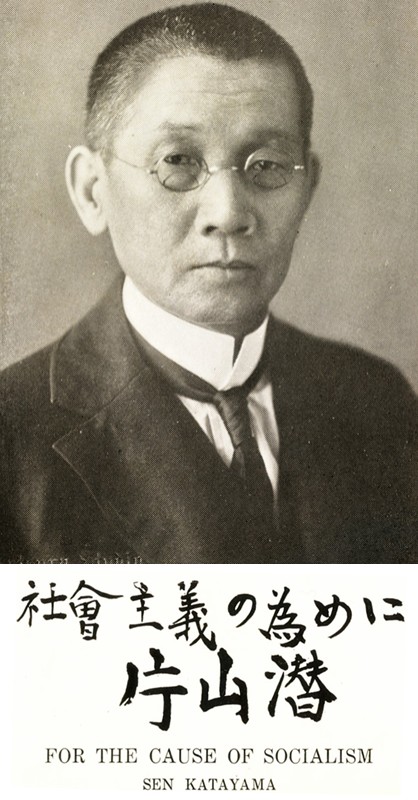Sen Katayama (1918)
First published: 1918 by Charles H. Kerr & Company;
Transcribed: for the Marxists Internet Archive by Ted Crawford.
HTML markup: Michael Schauerte.
Preface
Introduction
1. Background
2. Period of Success
3. Socialism a Popular Topic
4. The Russo Japanese War
5. Socialist Party Activities
6. Suppression and Revolt
7. Marxian Socialist Group

This little book is the first attempt to give to the English speaking public a history of the labor and socialist movement in Japan. It was originally intended for the Internationalist Socialist Review during the year 1917; so that it is necessarily brief and incomplete in the details of events however interesting; but I tried to present the events and their developments. Bearing this in mind the reader will understand the limits of this book.
Since I wrote this, many things have happened. Our working classes in Japan have lately awakened. This fact is shown by numerous strikes during the last year. These were mainly due to the influence of the Russian revolution by which our people, especially the working classes, were so greatly impressed and interested. They were also due to the rapid growth of Capitalism and its enormous profits on account of war industry. Almost needless to say that the working classes did not get any reasonable increase in their wages, while the prices of their necessaries were rising by leaps and bounds.
Fearing the effect of these changes the ever stronger autocratic, militaristic government became more and more sensitive and terror stricken, as they viewed the people becoming enthused by the Russian revolution. The government has become lately still more oppressive and autocratic in dealing with the working class movement and socialism, the leaders being effectively bound and gagged. Even the Yu-Ai-Kai, the yellowest labor movement in Japan, supported by philanthropic capitalists like Baron Shibusawa, is controlled by the despots; so that its so-called members, or more accurately subscribers to its organ, are falling away. Nevertheless, this darkest condition strengthens our faith in the coming social revolution in Japan. Never in my time have we so often heard the cry for another revolution to put down the present bureaucratic government for a better and democratic form of government. The living fact that the Russian revolution was accomplished by the joint action of the workers and the soldiers is the great revelation to the Japanese who are oppressed under militarism and conscription. Above all it has strengthened tacitly a hope for the brighter dawn of the coming social revolution. To counteract and crush this hope and its increase the terrified militaristic government has entered upon its death struggle and is making prodigious efforts, scrupulous and unscrupulous, to root out the socialist propaganda. But there is little doubt that within a few years our faith in the social revolution will be amply rewarded.
I here acknowledge the kindness, help and encouragement given me in writing this document by comrades Mr. and Mrs. S. J. Rutgers, under whose generosity and unbounded hospitality I was able to find time and opportunities for gathering and preparing for my material. I also acknowledge the kindness of Mrs. Mary E. Marcy who read the manuscript and corrected errors in English.
SEN KATAYAMA
New York City, July 9, 1918.